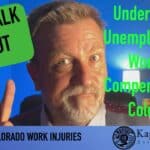When people think of dangerous jobs, the ones that come to mind are those of miners or construction workers – not nursing home workers.
But the truth is nursing home work causes more injuries than construction or mining. In a 2012 US Bureau of Labor Statistics (BLS) survey, nursing and residential care facilities experienced 237 injuries per 10,000 full time workers which is twice as much compared to the manufacturing industry, according to the Occupational Safety and Health (OSHA).
Overall injury-incident rates comparison per 100 employees:
8.6 for nursing home employees
5.6 for workers in underground coal mines
4.8 for workers in tire manufacturing; and
3.5 for building construction
The single biggest worker injury in the healthcare sector? Musculoskeletal injuries.
What is musculoskeletal injury?
This injury pertains to the damage of muscular or skeletal systems, which is usually due to a strenuous activity. Some common musculoskeletal injuries are sprains, rotator cuff injuries, muscle strains, low back injuries, and tendinitis. Most of these injuries are due to overexertion from lifting and transferring residents. Symptoms include pain, fatigue, and sleep disturbances.
It’s physically demanding and challenging.
Nursing home work is a stress-filled, physically-demanding environment. Part of a nurse’s work is carrying and moving their patients from their beds to their toilets, showers, wheelchairs, and recliners. Then there are also the risk of obtaining infections agents and fluids, having to deal with violent patients, and answering inquiries of family members.
The OSHA admitted:
“We only see the tip of the iceberg. The numbers of injuries are really higher than the numbers show since many workers don’t report injuries. Instead they use their sick time, suffer quietly, or quit their jobs.”
This is why the (OSHA) has put together a new brochure, “Safe Patient Handling: Preventing Musculoskeletal Disorders in Nursing Homes.”
Learn More About Nursing Home Workers Who Face Biological Hazards and The Workers Compensation Benefits They May Be Able To Receive
OSHA administrator David Michaels said in a press release:
“This new resource will help make employers and workers aware of the activities that pose the greatest hazards to workers who care for residents in nursing homes and residential care industries and what can be done to decrease risks to these workers.”
Under the Occupational Safety and Health Act of 1970, employers are responsible for providing safe and healthful workplaces for their employees. OSHA’s role is to ensure these conditions for America’s working men and women by setting and enforcing standards, and providing training, education and assistance.
The brochure prioritizes healthcare workers and residential care facilities that hurt themselves through repeated and awkward lifting of heavy objects, including people.
Health is wealth
Being healthy means you can do more work and earn more. But being unable to perform your job well will mean less pay. Employers have the responsibility to provide the appropriate compensation when their employees are injured.
Have you been hurt while working in a nursing home or residential care facility? Contact Kaplan Morrell and we can help you determine if you are eligible for workers’ compensation benefits. We will guide you through the process of obtaining them and get the benefits that you deserve. Contact our experienced Denver Workers’ Compensation Attorneys here or call us at 303-780-7329 for your FREE CONSULTATION.




